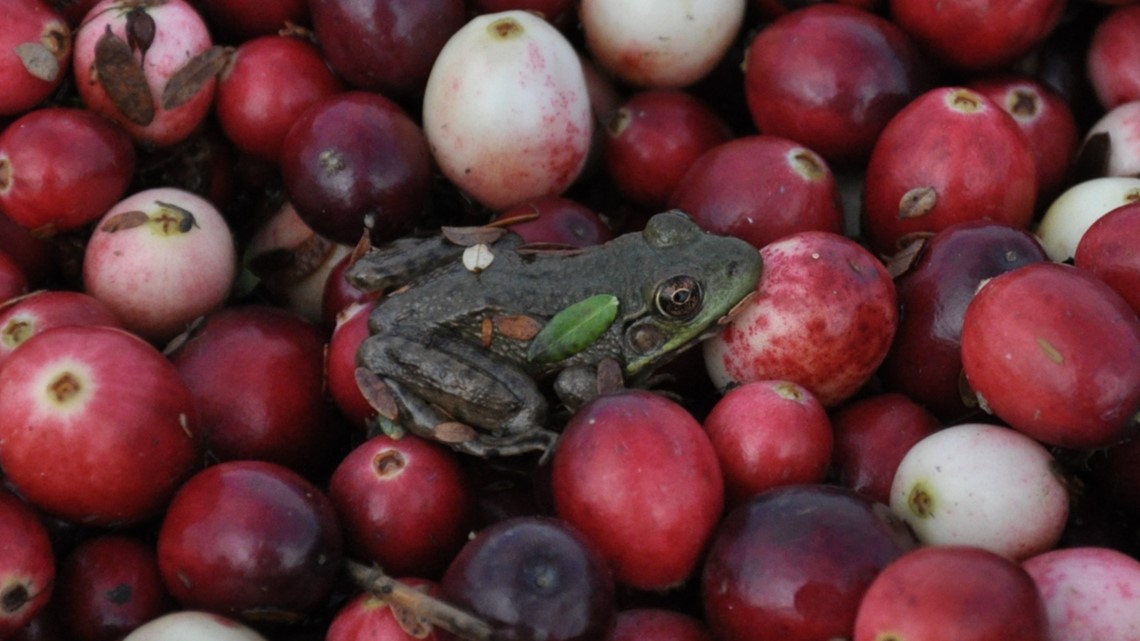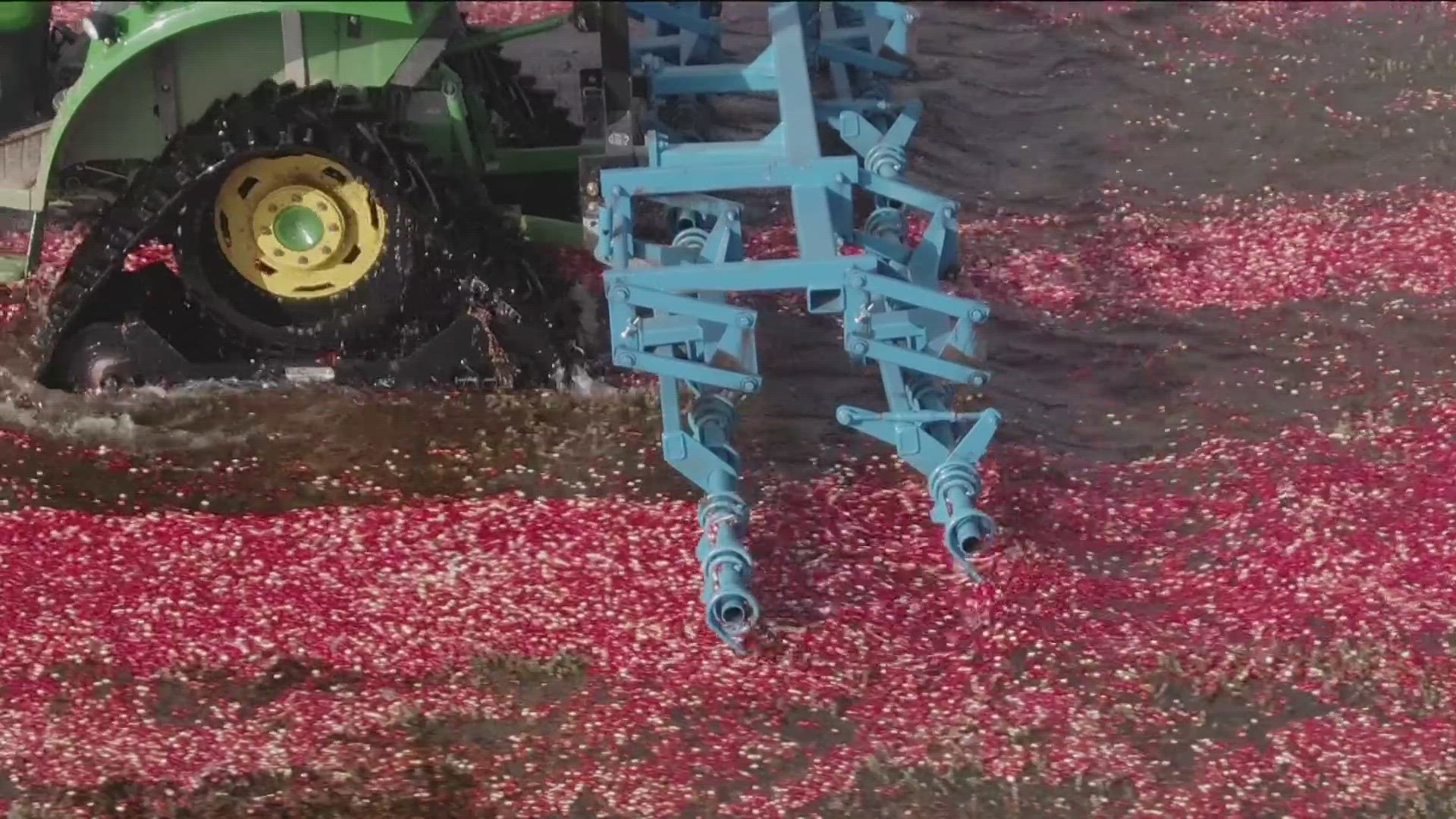WISCONSIN RAPIDS, Wis. — A traditional Thanksgiving table isn’t just a treat for the stomach. There are the smells of cooked food and flowers on the table. The sound of clinking dishes and cooking food drifts in from the kitchen.
And don’t forget the color of the meal: golden-roasted turkey, snappy green and orange vegetables, and for most people, vibrant red cranberries.
Despite the jellied-can shape that so many cranberries adopt on their way to the table, these round fruits start their lives in a dense, brushy nest surrounded by hundreds of their siblings.
Originally, cranberries grew wild in the sandy soil and collected by Indigenous peoples.
Eventually, white farmers started growing the bright berries, leading to an industry that produces around 65% of the nation’s cranberries.
Many areas of Wisconsin have that perfect mix of sandy soil and water needed for cranberry marshes. More than 100 years ago, the Dempze family put down both their roots and the roots of their cranberry plants.
"I am a fifth-generation cranberry farmer. My great-great grandfather, Charles Dempze, started growing cranberries in 1900 when he was just 10 years old,” said Rochelle Hoffman, from her farm in Wisconsin Rapids, Wisconsin.
Since then, The Dempze Cranberry Company and their family farm has grown into an 87-acre farm, plus an even bigger farm in Tomah and a third family farm in Augusta since then.


The family chose a bright day in mid-October to roll out the crews and equipment needed for the fall harvest.
After flooding the cranberry marsh, a tractor pulls a harrow through the flooded cranberries, knocking them off the vines. Cranberries then float to the top of the water, thanks to the four air-pockets that make them buoyant.
Crew, wrapped in hooded sweatshirts and dark rubber waders, then corral the floating berries with a bright yellow boom. Once the cranberries are squeezed into a small area in a corner of the marsh, tubes start sucking them into a machine that shakes off the last green leaves and vines.


When they’re first picked, the cranberries are all shades of red and pink, with white and speckled berries mixed in. But after a quick wash and a trip in a truck, the berries are frozen for juice and craisins, turning the vibrant red we see on our holiday tables.
Once the berries are picked, the water will drain back into the channels and waterways that ring the farm. The empty vines will then sink back to soil, stripped of the berries that pull them up.
"Cranberries are an evergreen perennial so they don't need to be planted every year,” Hoffman said. “In fact, they can live in perpetuity for well over 100 years — some are still cultivated after a hundred years."
So, both the farmers and their crops can continue to live on the land, growing bright cranberries, for the next hundred years.
WATCH:
Watch more Breaking The News:
Watch all of the latest stories from Breaking The News in our YouTube playlist:
WATCH MORE ON KARE 11+
Download the free KARE 11+ app for Roku, Fire TV, Apple TV and other smart TV platforms to watch more from KARE 11 anytime! The KARE 11+ app includes live streams of all of KARE 11's newscasts. You'll also find on-demand replays of newscasts; the latest from KARE 11 Investigates, Breaking the News and the Land of 10,000 Stories; exclusive programs like Verify and HeartThreads; and Minnesota sports talk from our partners at Locked On Minnesota.
- Add KARE 11+ on Roku here or by searching for KARE 11 in the Roku Channel Store.
- Add KARE 11+ on Fire TV here or by searching for KARE 11 in the Amazon App Store.
- Learn more about the KARE 11+ app for Apple TV in the Apple App Store.
- Learn more about KARE 11+ here.

